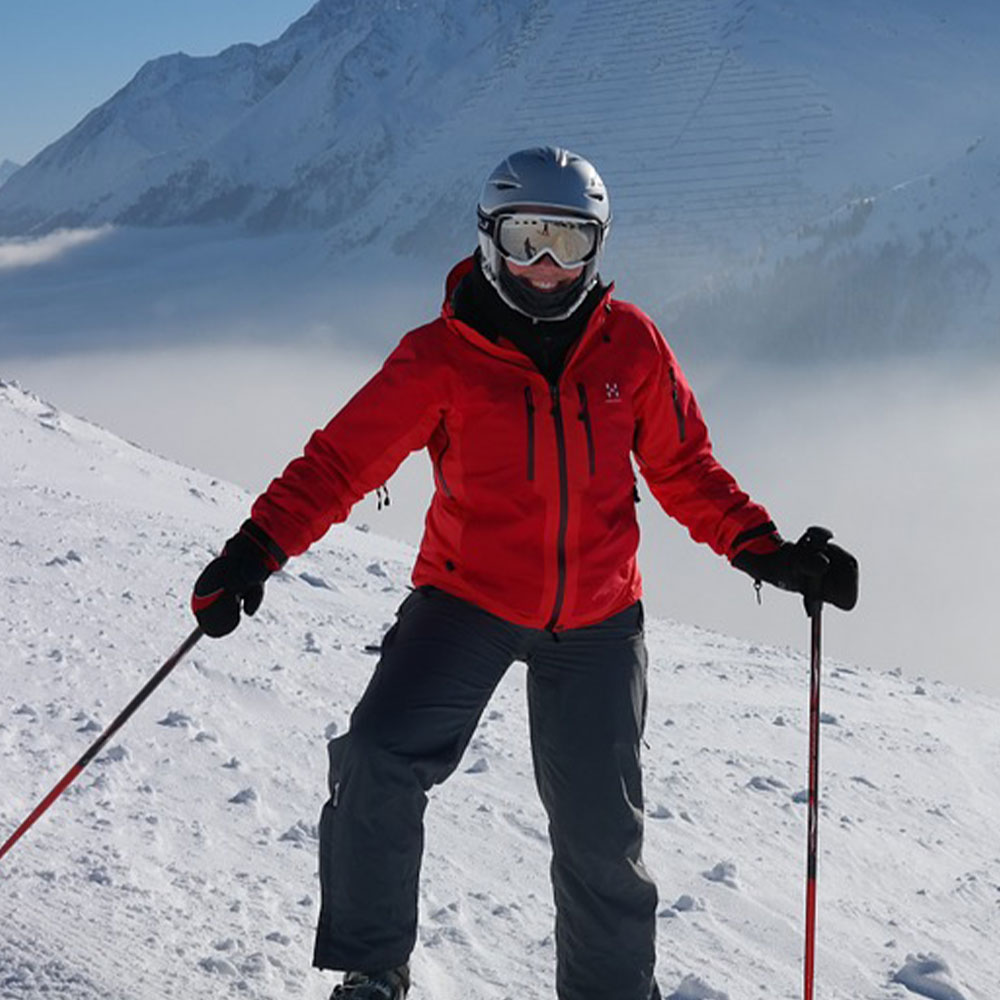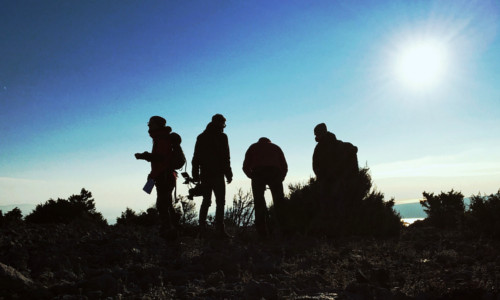How Communication Can Make or Break Your Hiking Adventure
Author

A keen runner, skier and nuts about cycling. Karl lives in Cumbria, where he loves encouraging his two children to follow in his outdoor lifestyle. Whilst out and about keeping active, Karl keeps a diary and shares it with Outdoor Look.
 Communication is crucial in all aspects of life. Without proper communication it is difficult to coordinate and accomplish complex tasks. When it comes to a hiking adventure, proper interaction between the hikers is necessary for a comfortable experience. Trails are physically sapping and mentally taxing, which requires a group to stay strong when faced with adversities. If you have people around who can share your pain and provide solutions to the problems, there is nothing like it. Creating a close knit unit is only possible through regular interaction, which makes communication extremely important.
Communication is crucial in all aspects of life. Without proper communication it is difficult to coordinate and accomplish complex tasks. When it comes to a hiking adventure, proper interaction between the hikers is necessary for a comfortable experience. Trails are physically sapping and mentally taxing, which requires a group to stay strong when faced with adversities. If you have people around who can share your pain and provide solutions to the problems, there is nothing like it. Creating a close knit unit is only possible through regular interaction, which makes communication extremely important.
I have been on many hiking adventures with different groups of people. Before setting out on a journey, I always make sure that I break the ice with my new mates. It is unlikely that you will always find people you like unless you are going out with your close friends. Sometimes you just have to learn to get along and stick to only meaningful communication. I have a few tips of my own that I would like to share with you through this post.
1. Start With a Huddle
Whether you are going out with a single partner or a group, you need to make sure that you discuss the plan in the beginning. Get into a huddle like a sports team and discuss the plan for the hike. This will set the right tone for your journey as everyone will be aware of their tasks and duties. Discussion can be based on all aspects of the hike, including the frequency of breaks, the pace of the journey and the responsibilities of each individual. Make sure that everyone concurs with the plan laid out. Getting agreement from everyone is a great way to start a hike. Once a person has agreed to the plan they will find it hard to renounce their responsibilities at a later stage of the hike.
2. Learn about Other’s State Of Mind
The challenges of a hike can sometimes be too much to handle for some individuals. You do not want people to get nervous or agitated as that can really affect the group. It is better to check on everyone, informally I must add, in order to understand how they are feeling. There's no need to call people out individually; just start a conversation by casually saying something like "It was a tough day, I am tired, how are you guys feeling?" This way you will get an answer without direct pinpointing and you will know the state of mind of your mates. Once you are aware of their mental state, you can help them with their challenges, and keep them going on the hike.
 3. Shuffle Leaders
3. Shuffle Leaders
Being the leader of the pack comes with many responsibilities. One has to be strict in laying down the law, which can create friction between the leader and the group. Changing leaders at different time intervals is a great way to stop this from happening. If a person has great knowledge of the terrain, they should lead the pack while walking. When it comes to camping, the responsibilities should be shifted to the person who is accomplished at creating a tent. And at the night time when supper needs to be cooked, leadership should be handed over to the best chef in the group.
4. Reflect on Your Experience
Communication should not end after the hike is complete. Debrief when you have finished the trail and discuss the higher and lower points of the hike. A discourse on your shared experience can go a long way in keeping the overall experience positive. With good thoughts in the mind while you are heading home, you are more likely to come back for the next hike with the same group of people.
Author

A keen runner, skier and nuts about cycling. Karl lives in Cumbria, where he loves encouraging his two children to follow in his outdoor lifestyle. Whilst out and about keeping active, Karl keeps a diary and shares it with Outdoor Look.
Categories
- Sport (28)
- Product Reviews (3)
- Team Outdoor Look (7)
- Mike Wild (2)
- Mike Payton (2)
- Suse Hammond-Pears (3)
- Snowboarding (12)
- Latest Offers (105)
- Shop Talk (1)
- Competitions (7)
- Walking (413)
- Lifestyle Fashion (8)
- Travel (86)
- Kit Guides (176)
- Workwear Clothing (6)
- Safety Workwear (4)
- Health/Fitness (289)
- Skiing (91)
- Great Outdoors (1316)
- Cycling (92)
- January 2025
- December 2024
- November 2024
- October 2024
- September 2024
- August 2024
- July 2024
- June 2024
- May 2024
- April 2024
- March 2024
- February 2024
- January 2024
- December 2023
- November 2023
- October 2023
- September 2023
- August 2023
- July 2023
- June 2023
- May 2023
- April 2023
- March 2023
- February 2023
- January 2023
- December 2022
- November 2022
- October 2022
- September 2022
- August 2022
- July 2022
- June 2022
- May 2022
- April 2022
- March 2022
- February 2022
- January 2022
- December 2021
- November 2021
- October 2021
- September 2021
- August 2021
- July 2021
- June 2021
- May 2021
- April 2021
- March 2021
- February 2021
- January 2021
- December 2020
- November 2020
- October 2020
- September 2020
- August 2020
- July 2020
- June 2020
- May 2020
- April 2020
- March 2020
- February 2020
- January 2020
- December 2019
- November 2019
- October 2019
- September 2019
- August 2019
- July 2019
- June 2019
- May 2019
- April 2019
- March 2019
- February 2019
- January 2019
- December 2018
- November 2018
- October 2018
- September 2018
- August 2018
- July 2018
- June 2018
- May 2018
- April 2018
- March 2018
- February 2018
- January 2018
- December 2017
- November 2017
- October 2017
- September 2017
- August 2017
- July 2017
- June 2017
- May 2017
- April 2017
- March 2017
- February 2017
- January 2017
- December 2016
- November 2016
- October 2016
- September 2016
- August 2016
- July 2016
- June 2016
- May 2016
- April 2016
- March 2016
- February 2016
- January 2016
- December 2015
- November 2015
- October 2015
- September 2015
- August 2015
- July 2015
- June 2015
- May 2015
- April 2015
- March 2015
- February 2015
- January 2015
- December 2014
- November 2014
- October 2014
- September 2014
- August 2014
- July 2014
- June 2014
- May 2014
- April 2014
- March 2014
- February 2014
- January 2014
- December 2013
- November 2013
- October 2013
- September 2013
- August 2013
- July 2013
- June 2013
- May 2013
- April 2013
- March 2013
- February 2013
- January 2013
- December 2012
- November 2012
- October 2012
- September 2012
- August 2012
- July 2012
- June 2012
- May 2012
- April 2012
- March 2012
- February 2012
- January 2012
- December 2011
- November 2011
- October 2011
- September 2011
- August 2011
- May 2010
- April 2010
- March 2010
- February 2010
- January 2010
- November 2009
- October 2009
- September 2009
Submit a Comment